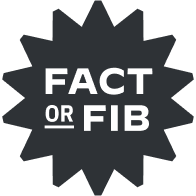Would you eat pet food for a living?
Thursday, March 14, 2024
 Make every day more interesting. Each day a surprising fact opens a world of fascinating information for you to explore. Did you know that….?
Make every day more interesting. Each day a surprising fact opens a world of fascinating information for you to explore. Did you know that….? 









| Original photo by Yana Tikhonova/ iStock |
| Pet food companies employ human taste testers. | Like sanitation workers, human pet-food testers have a job that inspires a certain degree of stomach-churning but nevertheless provides a valuable service. Think about it: Some 87 million U.S. households own at least one pet, which means there's a bustling industry for nutritional products that keep our animal companions happy and healthy. And since Fido isn't likely to elaborate on how his breakfast tastes (satisfying crunch, but a little too much salmon?), the onus is on the two-legged testers to deliver more insightful evaluations.
As such, pet-food testing is a multifaceted role that requires attention to particulars and strong communication skills. Obviously, the products need to be taken into the mouth for tasting, and while some testers claim to actually enjoy eating the food, most simply spit it out after chewing for several seconds. From there, the tester provides detailed reports on the nuances of aroma, flavoring, and texture. They also may be involved in the development of new food formulas and production methodology. It's a job that requires a distinct set of skills rather than a set education: While a degree in a culinary-related discipline such as nutrition science may help, it's more important for a would-be employee to demonstrate a passion for the process and a clear ability to differentiate between mouthfuls of gravy chicken chunks from plates A and B.
The pros of this career choice include apparently high levels of job satisfaction: "No two days are ever the same," noted one longtime taster, who added that he derived joy from helping pets "become happier and healthier." And the pay isn't too shabby, either, with reports of a salary that can soar to over $100K for experienced testers. The cons? Quality ingredients or not, you're still required to dig into food you probably wouldn't touch otherwise. But if you're looking for a new source of income, and figure you can better tolerate a steady diet of cold meats compared to cold calls, then this may be the job for you.
|
|
 | | Pet food stamped with a "human grade" label should be produced at a facility licensed to prepare human food. | | |
|
|
| Pet food stamped with a "human grade" label should be produced at a facility licensed to prepare human food. |  |  |
|
|
|
|
|
| Protect Your Pet's Future With Preventative Care From Lemonade Pet | | Worried about unexpected vet bills for accidents, illnesses, or even preventative care? Lemonade Pet Insurance offers peace of mind with comprehensive coverage designed by veterinarians. Plus, you have the freedom to choose your trusted vet, as you can be covered with any licensed veterinarian in the U.S. Get a quote in as little as 90 seconds and manage everything in the app, from submitting claims to accessing helpful resources. Don't let financial stress come between you and your furry friend's health — choose Lemonade, the pet insurance built with your pet's well-being in mind. Lemonade is available in select states; find out if your state is covered at lemonade.com/lemonade-goes-global. |
|
|
|
| The first canned dog food appeared in the U.S. in the 1920s under the brand name __. |  |
|
|
 | Numbers Don't Lie |
|
 | | Dollars spent on pet food and treats by U.S. consumers in 2022 | | 58.1 billion |
|
|  | | Daily recommended grams of crude protein for a 33-pound adult dog | | 25 |
|
|
|
 | | Taste buds on the tongue of an average cat | | 473 |
|
|  | | Percent of pet owners who have eaten pet food, per a 2020 survey | | 8 |
|
|
|
|
|
 | Yes, pet food is also tested by actual pets. |
|
| For all the hoopla over human testers digging into bowls of pet chow, animals continue to hold down a vital place in the food-testing chain for many companies. Although these participants lack the means for detailed analysis, there are tried-and-true methods for determining how well a particular meal might fare on the marketplace using data they provide. Most common are the one-bowl method, which measures how much food is eaten from identical portions of different products over multiple days, and the two-bowl method, in which animals choose between the competing options presented. More complex systems are also used, including one in which dogs are permitted to smell food-filled toys and then indicate their preference when the toys are placed in a random order before them. As with all products that involve animal testing, there are ethical concerns about the treatment of creatures that essentially spend their lives inside pet-food facilities, although this issue is at least partially offset by companies that offer test-at-home programs for owners and their pets. | | |
|
|
|
| Thank you for supporting our advertisers. They help keep Interesting Facts free! |
|
|


posted by June Lesley at 5:15 AM


![]()
![]()
![]()
![]()
0 Comments:
Post a Comment
<< Home